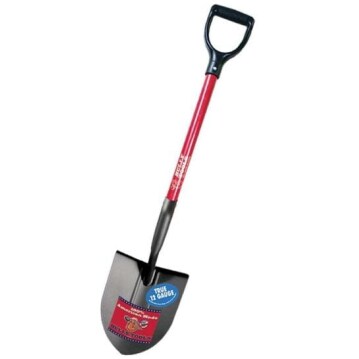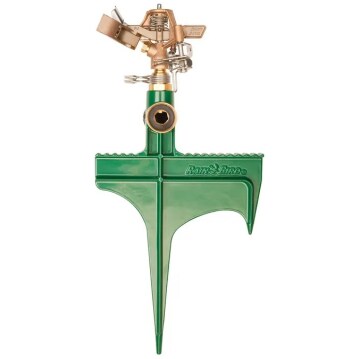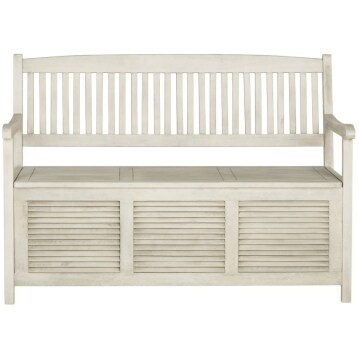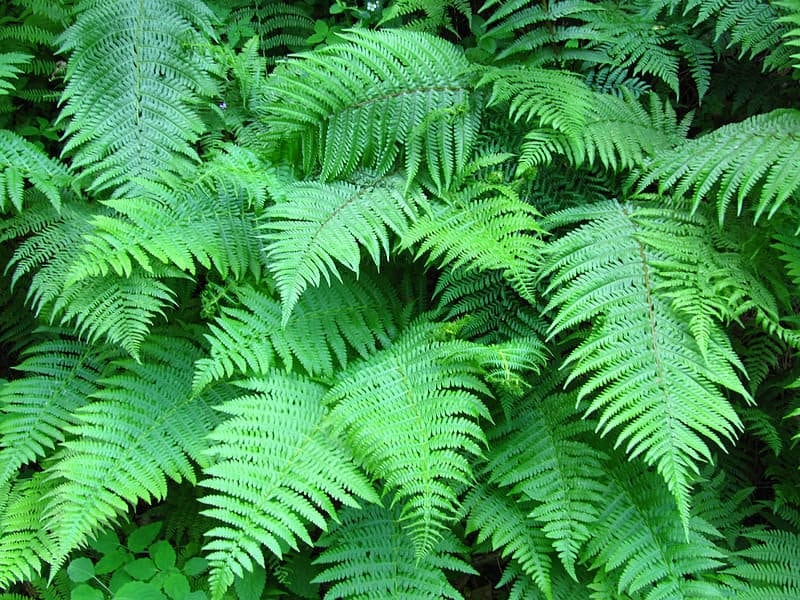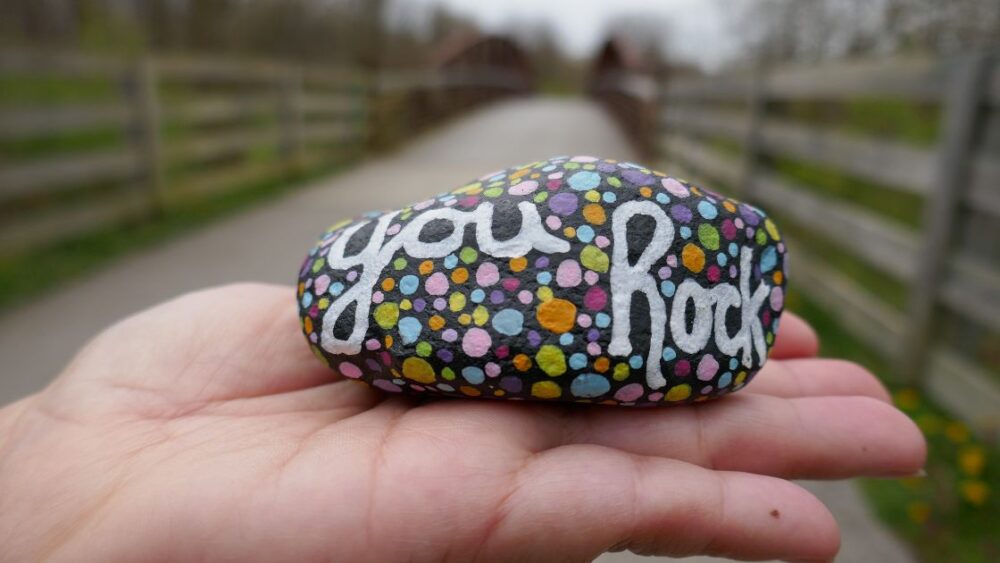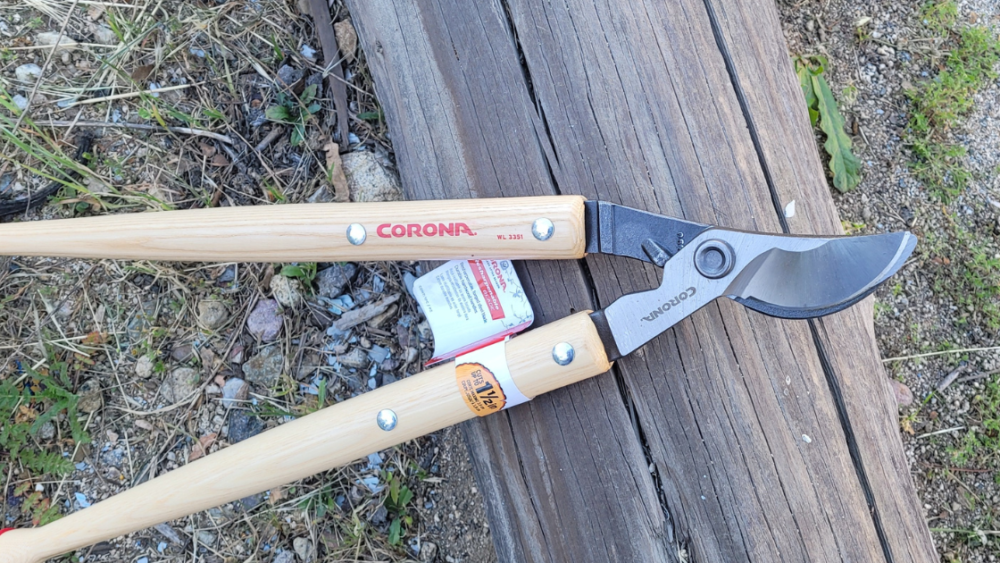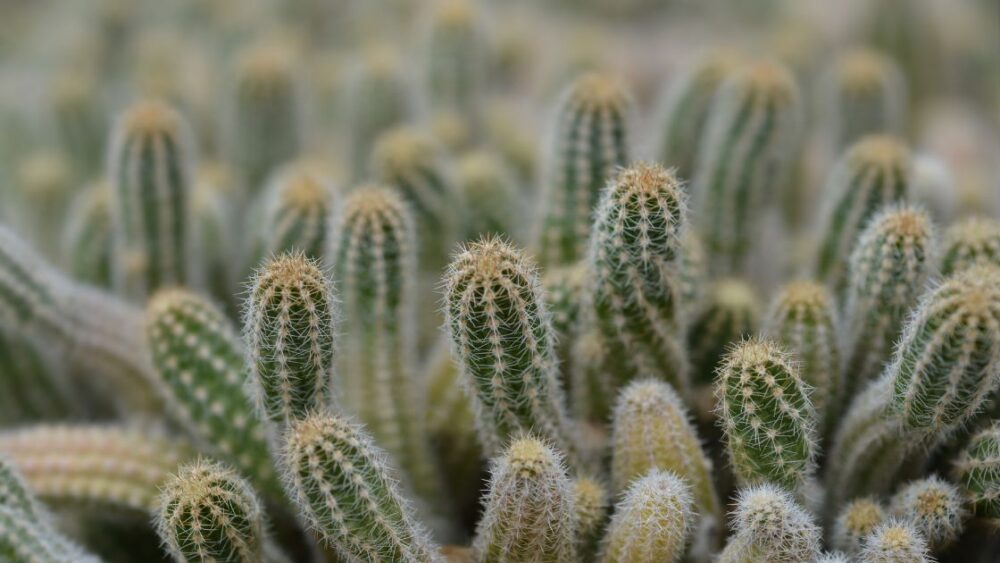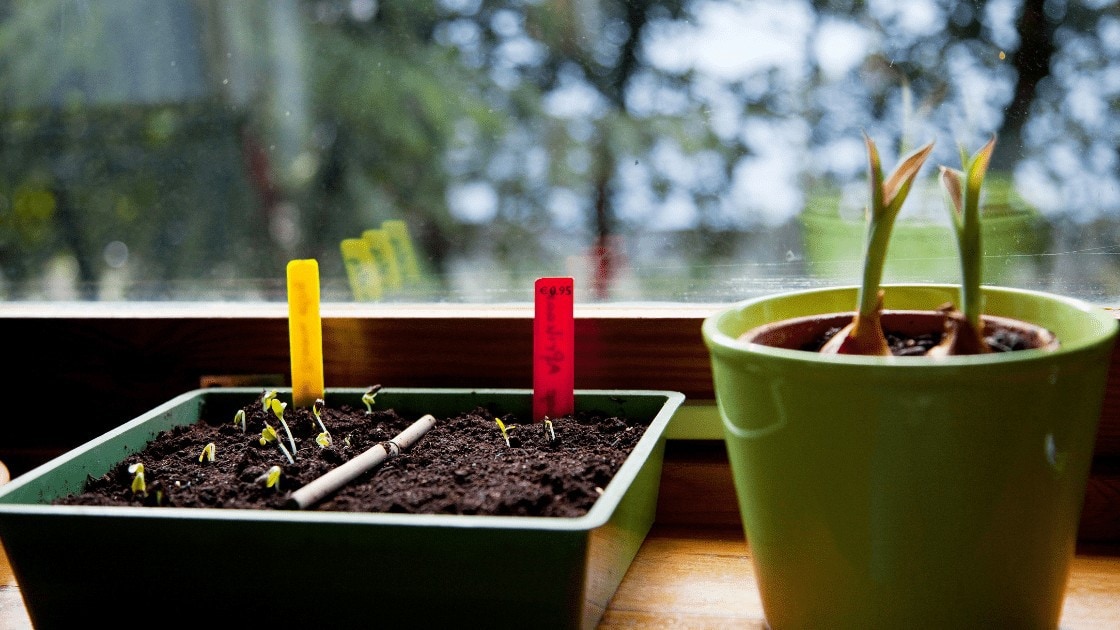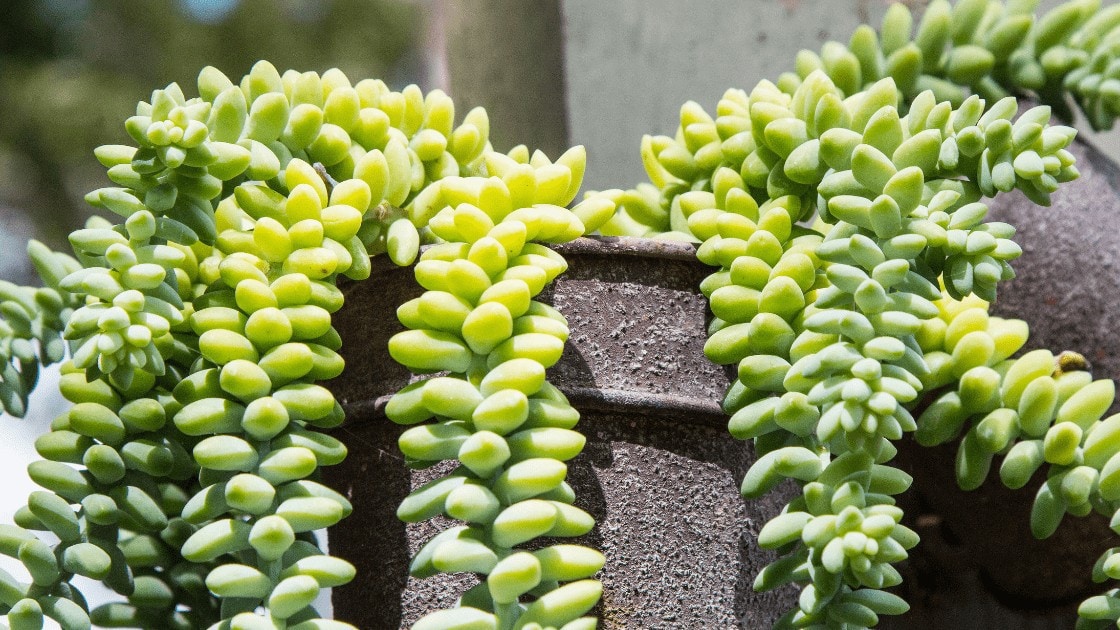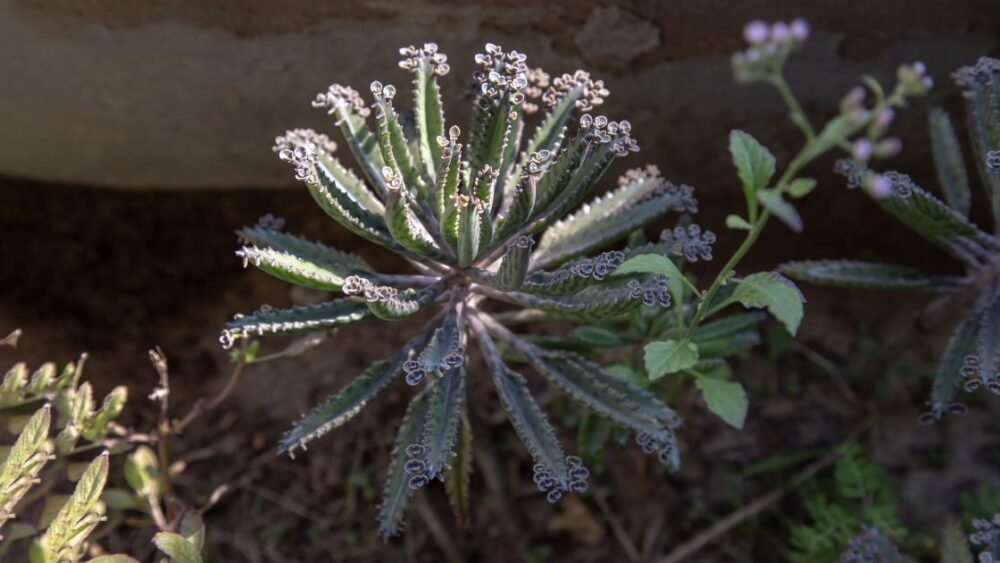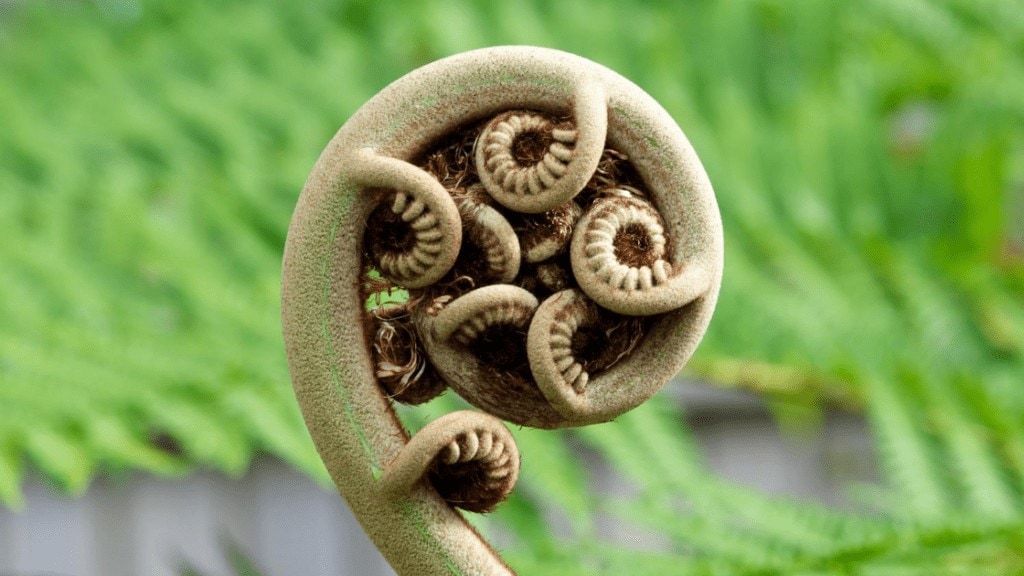
Ferns are flowerless plants that usually reproduce by creating spores. While they are akin to flowering plants in some ways, such as having stems, leaves, and roots, and share a similar vascular system, fernslack flowers or seeds. What this means for reproductive purposes is that rather than yielding seeds from flowers, ferns yield spores from their leaves. Occasionally, certain types have been known to reproduce vegetatively, as in the case of the walking fern.
Fernsare quite unique as far as land plants go because when the spores are released, they don’t automatically become a new fern plant. Instead, they develop into a tiny plant that is called a gametophyte first. However, it is necessary for water to be present in order for ferns to complete their reproductive cycle.
In general, what really serves to make ferns unusual is that they do not need flowers to get people to notice them, as sometimes they can have surprisingly unique forms and structures that attract all eyes to them without any help.
Browse our Affiliate Products
Why Are the Leaves Called Fronds?
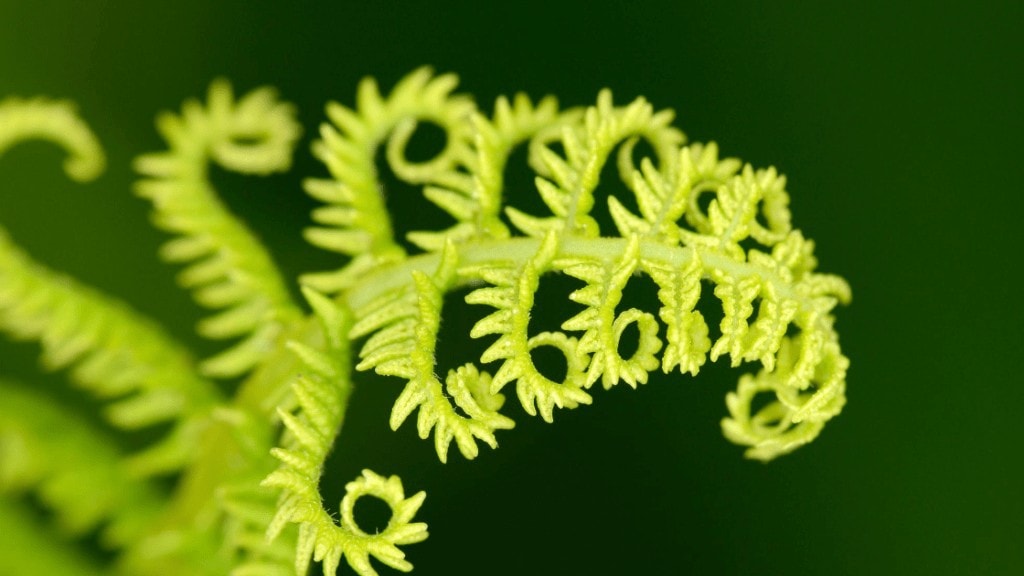
The leaves of ferns are called fronds. This is because fronds are composed of vascular tissue with leafy blades and a stem which runs from the frond down to the tip. Their main roles are in reproduction and photosynthesis.
What is the Symbolism of a Fern?
There is an old Slavic myth that states that fernsbloomed once annually, during the Ivan Kupala night. When people came to see the fern flowers and looked upon them they were granted riches and the happiness to enjoy them. Nowadays, when you gift someone with a fern, it should be someone that you really love, or deeply care about, because a fern represents shelter, wealth, happiness, and confidence. It is a silent promise that all of this is awaiting them through you and what you wish to bestow upon them.
Furthermore, Finnish tradition states that anyone who finds the “seed” of a fern blooming on Midsummer night will, be permitted to travel invisibly, and will thus be led to the areas where eternally blazing Will o’ the wisps, referred to as aarnivalkea mark the spot where treasure is hidden. It is said that these spots are protected by a special spell that keeps anyone but the holder of the fern-seed from finding out their locations.
For more information on ferns, check out this article: Why Is My Fern Wilting and Drooping? Does It Need More Water?
Do Ferns Make Good House Plants?
If you want to successfully grow ferns indoors, the key to having lush, beautiful plants is all in the species you choose. There are many ferns that make terrific low-maintenance houseplants. All you have to do is to ensure that they have enough sunlight and moisture in the soil.
Don’t forget that most ferns grow in damp, shady locations, but there are others that love the sun. The main problem when growing ferns indoors is that the humidity is usually too low for certain ferns to flourish. This fact is never truer than in the winter when the heat is on.
Since there are somewhere around 10,560 species of fern, you shouldn’t have any trouble finding the perfect one or two for your home.
Are Ferns Toxic to Dogs or Cats?
Ferns such as the Boston Fern, the lemon button fern, and a whole host of others are not toxic to dogs or cats and make fantastic houseplants too. So in general, don’t worry if your dog or cat grabs a bite when you aren’t looking.
What Ferns Are Toxic to Dogs?
The one notable exception to the above rule is the Asparagus Fern, also known as the Emerald Fern, or Emerald Feather. This fern has berries which are toxic to dogs and cats.
How Long Can a Fern Live?
The lifespan of a fern completely depends on the species that you choose. There are certain ferns which can live for as long as a century.
Where Do Ferns Grow Best?
There are four main habitats that ferns are generally found in: moist, shady woods; rock face crevices, particularly when protected from direct sunlight; tropical trees, and acid wetlands such as swamps and bogs.
How Do You Tell If a Fern Is Male or Female?
This might come as a surprise to you, but fern plants do not come in male and female like other plants do. What happens is that when the spores germinate they create a small green structure called a prothallus that creates separate female and male organs called antheridia (male) and archegonia (female).
How Do I Identify My Fern?
Like with other plants, ferns have leaves, stems, and roots. These parts have specific names. It is important to know these terms when identifying ferns. What you need to do in order to identify your fern, is to examine one of the fronds closely. Turn it over and look at the underside too for reproductive structures, and lastly, examine the stalk of the frond, taking note of its texture and color.
The frond of a fern is composed of a stalk with a green, leaf-like growth protruding from it. Normally, you will find that the leaf-like material which makes-up a frond is sub-divided into multiple leaf-like growths. Each division is called a pinnae. Sometimes the pinnae are divided even more into pinnules. The pinnules are then, in some instances divided into lobes. The more the leaf-like material is divided, the lacier or more feathery the frond appears. Fronds which are divided repeatedly are referred to as finely-cut.
As we’ve said, ferns differ from flowering plants in that they reproduce by spores rather than seeds. An single spore is so tiny that the naked eye cannot see it. However, while they are developing the spores are kept in visible structures known as sori. These grow on the frond’s underside. By taking note of the appearance and location of these sori, you receive a big boost in identifying what species the fern is. In some species each single sorus is seen without difficulty, but in other species the sori being present only changes the color, shape, and texture of the frond.
Certain species of fern produce primarily sterile fronds (minus sori), while also creating one or more fertile fronds (with sori). Still other ferns consist completely of fertile fronds. And in yet another twist, in certain species of fern, the sori only emerge from some of the pinnae, but remain absent from the rest.
Another aid in identifying the species of fern is examining the stalk of a frond. The section of the stalk that runs from the ground to the start of the leafy area of the frond is called the stipe. The part of the stalk which the leafy material attaches to is called the rachis. Taking notice of the color and texture of the stalk (for example, if the stalk is hairy), can help identify the species of fern.
What Are the Common Types of Ferns?
There are actually 18 kinds of fern. Some of the most common types are:
Christmas Fern
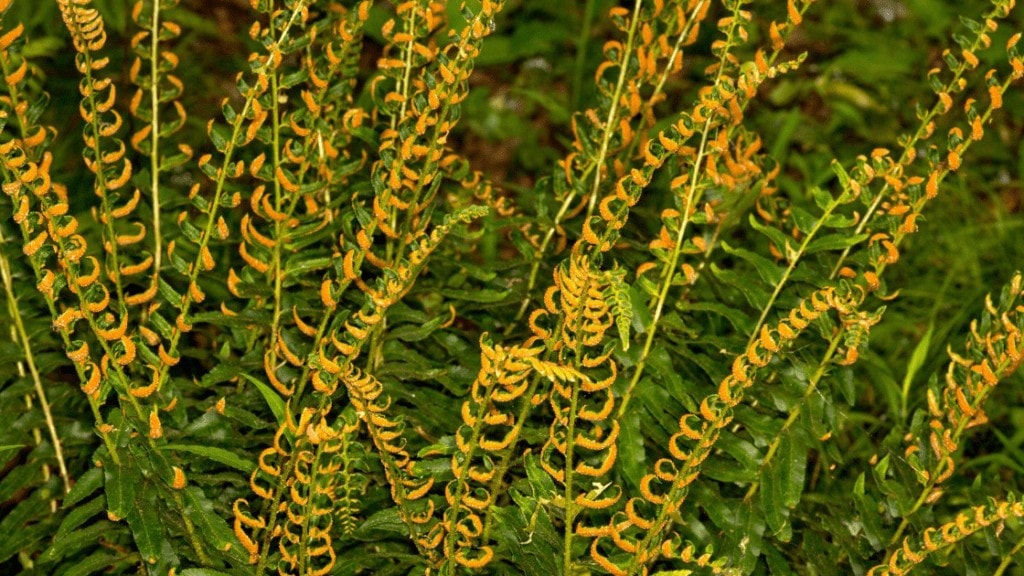
This fern is common in the state of Ohio. Closely examine the frond and you’ll notice a “bump” on the top of each pinna beside the stalk. A way to remember that this is Christmas Fern is to picture each pinna as a sled, and the bump as Santa sitting in the sled.
Maidenhair Spleenwort
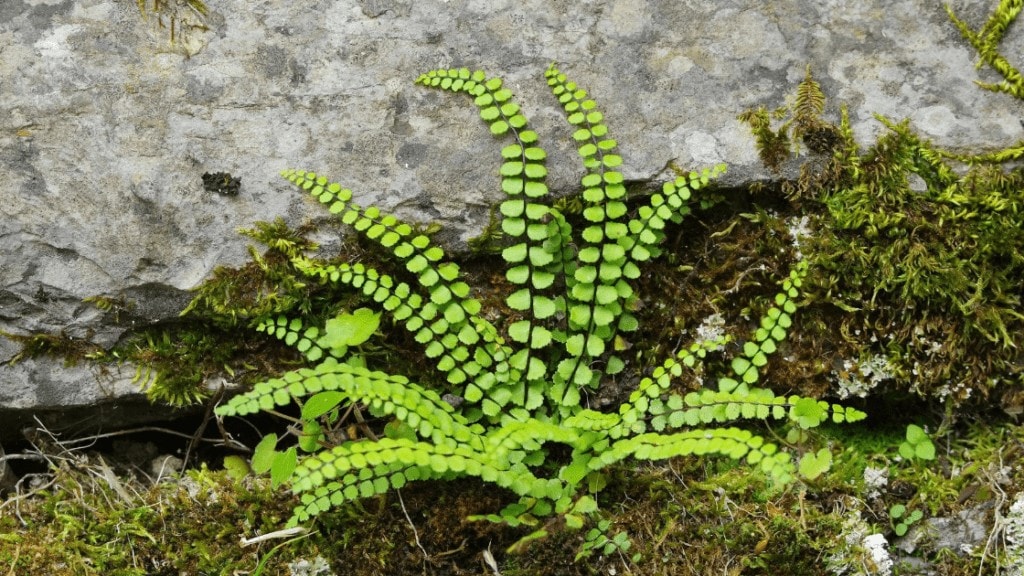
The spleenwort lacks the long stipe (the stem that runs from the roots to the leafy part). The pinnules are of greater length in the Maidenhair Wood Fern and shorter in the Maidenhair Spleenwort. Furthermore, the Spleenwort can be found growing directly out of a rock. This is because Maidenhair Spleenwort have a preference for rocky habitats, particularly when the rocks are made from limestone.
Lady Fern
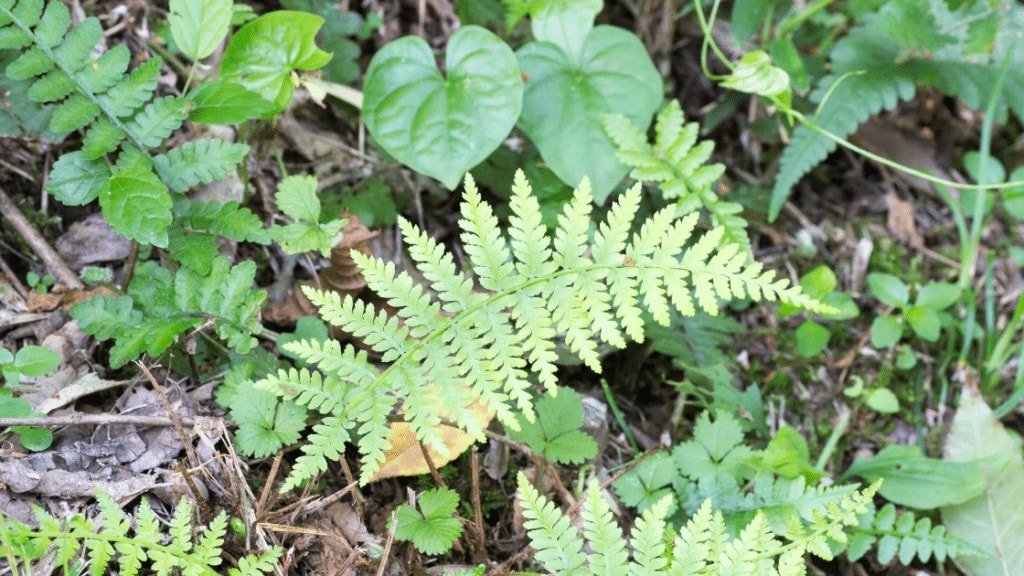
This fern is known for its reddish or wine-colored stalk. Moreover, its pinnea are widely spaced on its rachis (top section of the stalk).
Interrupted Fern vs. Cinnamon Fern
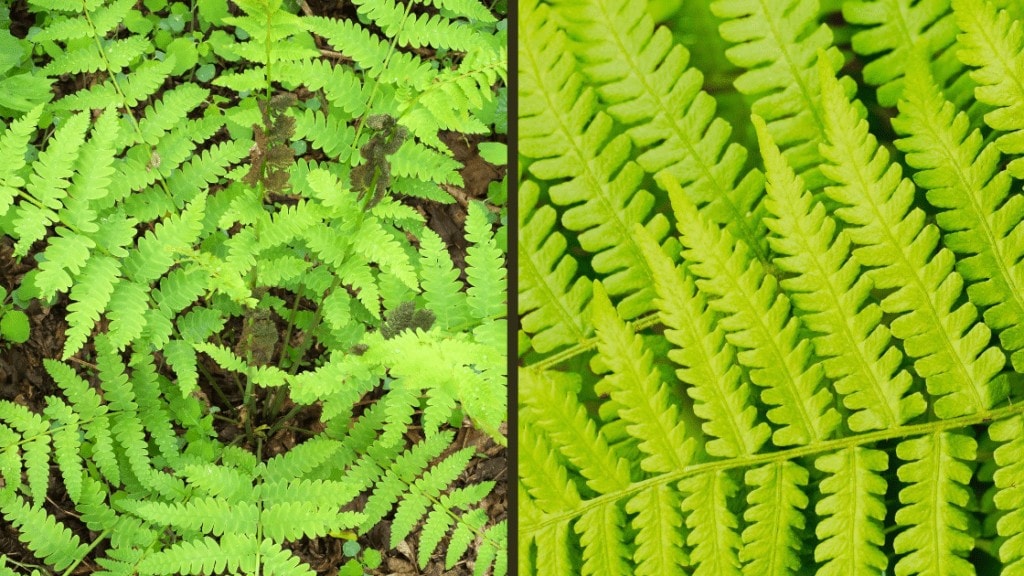
These two species of fern are closely related and even resemble each other. The best way to distinguish between them is to find the difference in where the reproductive sori are located.
For the Cinnamon Fern all the sori are positioned on a dedicated fertile frond that appears very different from the other fronds. It grows straight up from the middle of the fern, and is a cinnamon color, from which gives the species receives its name.
There is yet another way of telling the difference between the sterile frond belonging to a cinnamon fern and that of an Interrupted Fern. If you take a good look at the area where the pinna attaches to the rachis (stem) of the fern, you will notice that there is a little white fuzz that is present in the cinnamon fern. The Interrupted Fern does not have this.
The feature of the Interrupted Fern that is the most characteristic is the area where the sori are found on the frond. Just like the Christmas Fern the Interrupted fern has pinnae which are fertile (with sori) and sterile pinnae (minus sori) found on the same frond. With the Christmas fern all the fertile pinnae are found at the top of the frond and all the sterile pinnae at the base. With the Interrupted Fern the sterile pinnae are found both at the bottom and top. However, in the middle frond the sterile pinnae are interrupted by several brown, sagging fertile pinnae.
Silvery Spleenwort
The Silvery spleenwort is also called Silvery glade fern as it grows in openings or glades. The foliage is green, but a tad on the yellowish side. The sorai are appear on the back of the pinnae in a herringbone pattern. It is referred to as “silvery” because the entire stem is covered in white hairs.
Virginia Grape Fern
Found at the bottom of the fern, the sterile fronds are triangular and almost horizontal. The sori are found on an erect, fertile frond that shoots straight up from the center of the fern. When the fertile frond has matured, you can tap it and it will send out a cloud of spores.
Before the it reaches full maturity, the fertile frond is green and the pinnae have a grape-like appearance. Or you could take a look at the rounded, tightly grouped fertile pinnae and see the resemblance to a rattlesnake’s tail. That leads to its other common name, Rattlesnake Fern.
How Do I Care for My Fern?
The average fern usually prefers soil that is evenly moist and receives routine watering. Permitting the soil to dry out will place these plants under stress.
If you have an indoor fern, remember that all ferns crave moisture and require humidity. They also enjoy misting at routine intervals if done with soft, tepid water, unless the humidity of the room is kept artificially high with the use of a humidifier.
What is the Best Fertilizer for My Fern?
Compared to other plants ferns are fairly light feeders. It’s best to give them a balanced fertilizer, like 20-10-20 or you could try 20-20-20, with micronutrients given at around 200 ppm nitrogen. Receiving too much nitrogen can burn the tips on the leaves and roots if the plant should become dry. In the case of tropical ferns, they react more to particles of fertilizer left on the fronds from them being given a liquid feed, and can be sensitive to rates as low as 200 ppm nitrogen, so be very careful not to overdo the fertilizer.
Can You Use Miracle-Gro on Ferns?
You can use Mircle-Gro Water Soluble All Purpose Plant Food on your bigger Boston ferns and those ferns that are grown outdoors, and Miracle-Gro Indoor Plant Food on smaller indoor Boston ferns. How much you should use varies according to the size of the fern, so don’t ignore the instructions written on the label.
For more information about soils, check out our article below. What Are The BEST Potting Soils for Every Type of Plant?
How Often Do You Use Epsom Salt On a Fern and Why?
Epsom salt has sulfur and magnesium, which are required minerals for the continued health and growth of plants. If your fern is turning yellow, it might require more sulfur. If the lower fronds are yellowing between the veins, you might need to give it more magnesium.
According to statistics, Japanese holly, shaggy shield, and other ferns that grow outside may require Epsom salt due to mineral deficiencies, but ferns grown indoors usually do not require Epsom salt.
How do I Bring My Fern Back When It is Wilted or Almost Dead?
Your fern might be dry and have brown fronds, but it is not truly dead until 18 months have passed without new growth. To help it make a comeback:
1. Trim all of the fronds right down to the ground
2. Re-pot your fern with high quality, nutrient-rich soil. If you happen to have some compost mix it in too.
3. Allow it to remain outdoors in a sheltered but shady area for several months, although still keep regularly fertilizing and watering.
4. If your fern looks it, but is not really dead, you can try soaking it in water for 15 minutes.
Can You Over Water a Fern? How Can You Tell When You Over Water or Under Water?
When you have overwatered your fern, you will know it. This will make the fronds wilt and turn yellow, and can, if continued, cause root rot to set in and fungal diseases, particularly if the pot is left sitting in the water. Not giving your fern enough water will also cause it to wilt.
Why is My Fern Turning Brown?
Brown tips on ferns can occur if the soil is allowed to be too dry. When it is dry to your touch, it’s time to water slowly and let it sink deeply in. Cease your watering when the water runs off rather than sinking into the soil. Your fern could also have brown tips because of low humidity.
Can You Trim Ferns?
Ferns are actually fairly easy to trim. It’s best to prune them at the beginning of spring before they start to have new growth, or
when the new growth does come in. If your fern is indoors, be certain to cut off any dried or dead fronds when you see them.
How Do You Care For Your Fern During the Winter?
Before the first frost hits is the time to bring all potted ferns indoors for the winter.
1. Hose them all down to clean off the foliage and then examine them closely for insects
2. Certain plants may have acquired lots of new growth during the summer and will need some pruning.
3. It’s normal for a fern to need high levels of humidity in order for it to thrive. Thus, you should keep your ferns away from radiators, hot sunlight, and add moisture with the use of a pebble tray.
4. Light: It is always best to use indirect light like that which comes through a window facing south or east.
5. Water: Allow soil to begin to dry, then water deeply, and be certain water drains out.
6. Temperature: Slightly cool, about 70 degrees, and keep plants away from drafts.
7. Food: Feed once a week with liquid fertilizer. Dilute it to one-half power.
8. Mist: From time to time mist the plant so that it will remain clean.
For more information about caring for plants in the winter check out our article below. How Do I Care for My Plants in the Winter?
Conclusion
Ferns are truly unique creations, from their unusual reproductive methods, amazing designs, numerous species, remarkable resilience and ability to survive for decades. They’ve even been included in local legends and myths. If you are looking for a wonderful, non-flowering plant for your yard or home, it’s highly worthwhile to get to know all you can about ferns. Once you’ve gotten a thorough knowledge of them, you will want more than one of these extraordinary plants in your life.
With so many species to choose from it’s easy to find ones such as the Boston Fern that will make beautiful houseplants, requiring little fuss, and won’t be toxic to pets like the Asparagus Fern, also known as the Emerald Fern, or Emerald Feather is. It’s also fascinating to learn about some of the more common ferns such as the Christmas Fern, the Maidenhair Spleenwort, the Lady Fern, or the Cinnamon Fern.
With the proper care you can keep many ferns alive in your home and garden for years to come. All you need to do is to remember that they like moist soil, and frequent but not excessive watering, a well-balanced fertilizer, plenty of humidity, and love the occasional misting just as humans enjoy a shower. Only ferns grown outdoors usually require Epsom Salt though. And don’t fret if a fern starts to look sickly. They are actually quite sturdy and can make a quick recovery with a little extra attention and will continue to flourish and bring delight into your home, garden and life.
